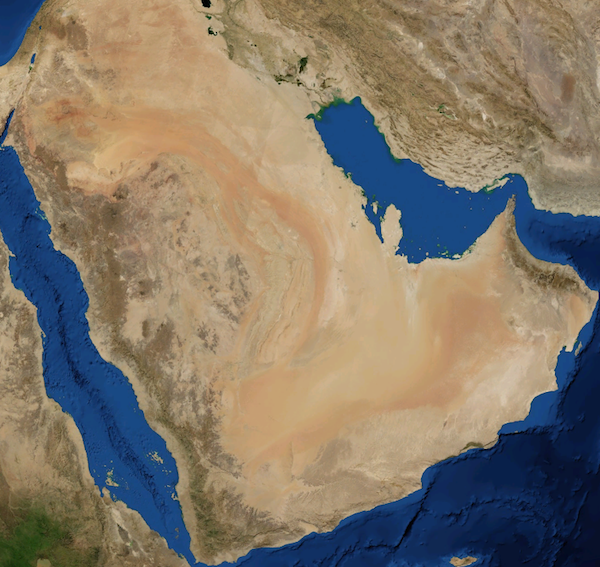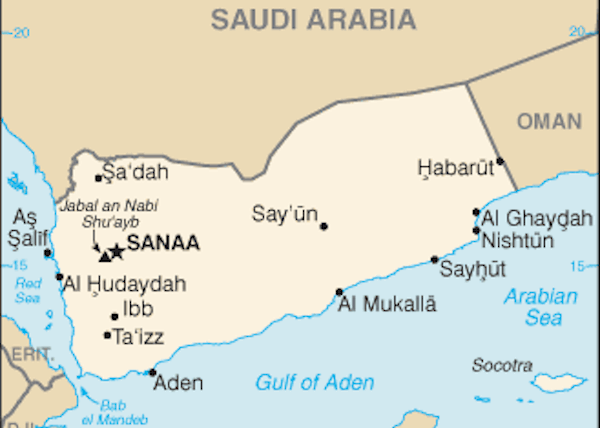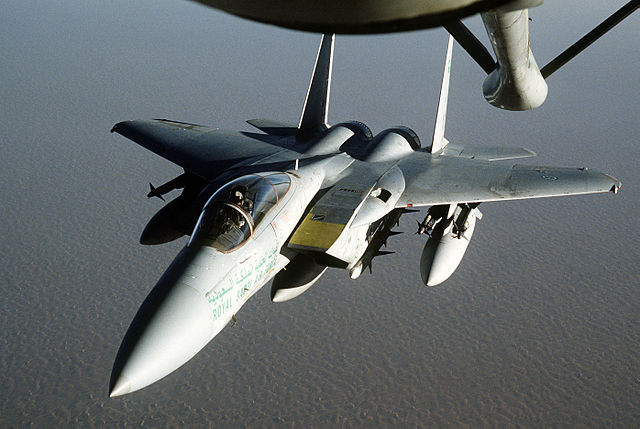You’ve probably heard of the FIFA World Cup in Qatar (which never should have been awarded to Qatar) being moved to the winter to avoid scorching stadium temperatures. You might also have heard of the devastating heat waves this past summer from Lebanon to Iran.
Will the Persian Gulf region and Arabian Peninsula be uninhabitably hot later this century (without significant action on climate change soon)? A new study published in Nature Climate Change journal argues so.

Satellite photograph of the Arabian Desert from NASA World Wind 1.4.
“Extreme heatwaves could push Gulf climate beyond human endurance, study shows” – The Guardian:
The study shows the extreme heatwaves, more intense than anything ever experienced on Earth, would kick in after 2070 and that the hottest days of today would by then be a near-daily occurrence.
[…]
They said the future climate for many locations in the Gulf would be like today’s extreme climate in the desert of Northern Afar, on the African side of the Red Sea, where there are no permanent human settlements at all. But the research also showed that cutting greenhouse gas emissions now could avoid this fate.
[…]
The new research examined how a combined measure of temperature and humidity, called wet bulb temperature (WBT), would increase if carbon emissions continue on current trends and the world warms by 4C this century.
At WBTs above 35C, the high heat and humidity make it physically impossible for even the fittest human body to cool itself by sweating, with fatal consequences after six hours. For less fit people, the fatal WBT is below 35C. A WBT temperature of 35C – the combination of 46C heat and 50% humidity – was almost reached in Bandar Mahshahr in Iran in July 2015.
[…]
Air conditioning might be able to protect people indoors and those in wealthy Gulf oil states might be able to afford it, said the scientists, but less wealthy nations would suffer. In Yemen, for example, the WBT would reach 33C.






